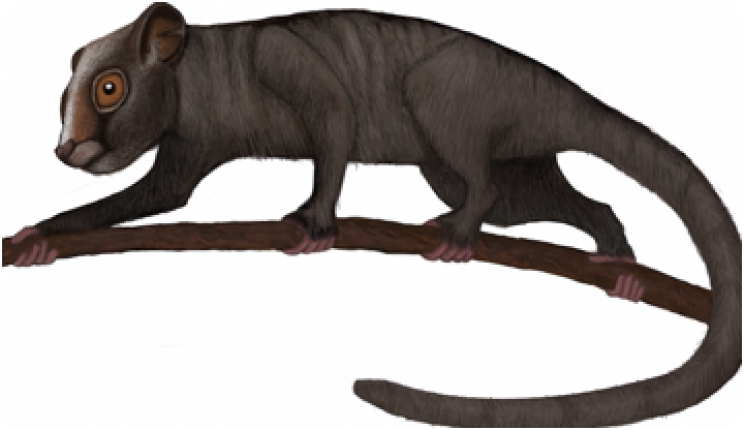
Reconstruction of a plesiadapiforme, genus Carpolestes. http://en.wikipedia.org/wiki/File:CarpolestesCL.png ICP researchers publish this week in the ‘Journal of Human Evolution’ the discovery of fossil remains of plesiadapiforme that are unique in Spain. The study of these remains, which were found in the town of Ager and dating back more than 50 million years, can not solve the riddle of the affiliation of the plesiadapiformes. The four identified molars are from the site Masia de l'Hereuet (Ager, Catalonia), and though there is no doubt that they are the first remains of this group identified in Spain, their study does not allow assignment to a particular species. It is clear, however, its assignment to the genus Arcius.Therefore, research will continuefrom a more complete fossil record. The ICP collections, where the four molars of this work are deposited, host other materials that have not been studied so far. 
Image of a plesiadapiforme molar found in the site Masia de l'Hereuet. Judit Marigó. ICP Plesiadapiformes: are they or are they not primates?Beyond the species to which these teeth belong to, the ICP researchers hope that the study of other remains will contribute to solving the puzzle on the phylogenetic affiliation of plesiadapiformes. This group has been considered either a sub-order of the primates, or a sub-order of Dermoptera, also known as flying lemurs. Masia de l’HereuetThe paleontological site Masia de l’Hereuet is located in the Valley of Ager, near the road that connects Agulló and Corçà (Catalonia). The area was initially studied by Crusafont and Rosell, during the 60's of last century. Since then, mammals, crocodiles and turtles remains have been recovered in Eocene sediments of the Ager Basin. Among mammals, perissodactyls, artiodactyls, rodents, marsupials and insectivores have been identified in the site Masia de l'Hereuet. +info Marigó, J., Minwer-Barakat, R., Moyà-Solà, S. & López-Torres, S. (2012). First record of Plesiadapiformes (Primates, Mammalia) from Spain. Journal of Human Evolution 62: 429-433. |










